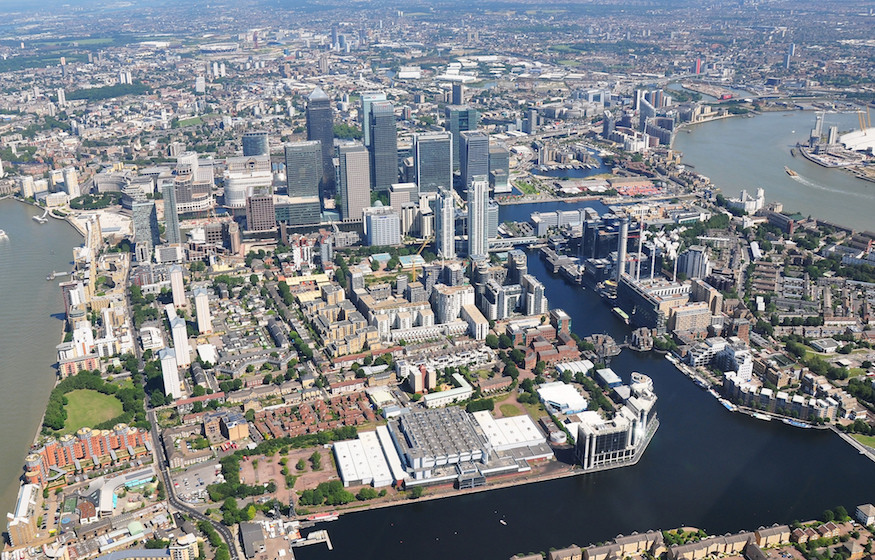
The Isle of Dogs may or may not be an actual island — but how did it get its name?
The first known use of the name 'Isle of Dogs' was in 1520, with Samuel Pepys then describing it as the "unlucky Isle of Dogs" in the 1660s. Despite harking back half a millennium, the origin of the name isn't known for certain — and in fact little is known about the history of the area before the last hundred years or so. It was simply marshland that flooded regularly.
Isle of Ducks

Some say it is a corruption of the Isle of Ducks; that makes sense given that the land used to be marshland. There must have been a duck or two living around these parts. It's not to be confused with London's other Isle of Ducks.
Isle of Docks
This seems like a sensible explanation, given that the area is in the heart of Docklands. But think about it; West India Docks and East India Docks weren't built until the early 1800s, 300 years after the name 'Isle of Dogs' was first used. The area was mainly marshland in the 1500s, so has no reason to be known as the Isle of Docks.
Isle of Dykes
It's possible the area was originally known as the Isle of Dykes, 'dyke' meaning a levee, embankment or flood bank. Lots of water, basically, which makes perfect sense.

Isle of Dutch
Was the area named after Dutch engineers? The river Thames breached its banks in 1488, flooding what is now the Isle of Dogs. The area remained boggy marshland for two centuries until it was drained by Dutch engineers in the 1600s.
Isle of Doggers
Another suggestion pointing to the area's maritime history; dogger was a name for a native Dutch fishing boat; these regularly arrived in the area due to Dutch trading links with London.
Isle of Dogs

Perhaps it's not a corruption of another name at all — perhaps it's always been the Isle of Dogs.
One of the most common explanations for the canine etymology is that the King kept his hunting dogs kennelled in the area. Which king we're referring to depends on which explanation you read, but given that royals lived in Greenwich, just across the river from the Isle of Dogs for more than two centuries, it's not unlikely one or more monarchs did this. Henry VIII in particular was a keen hunting fan, and would have needed several dogs to tackle his many royal hunting grounds.
However, local history blog Island History doesn't think this is the case.
Another canine link to the area is Dead Dog Bay, a historical name of Parish Dock in Greenwich, thought to be so named because dead dogs (and human bodies) used to wash up on this part of the river. Given that this was also just the other side of the Thames from the Isle of Dogs, it's likely that canine corpses would have washed up here.

Interestingly, neighbouring Canary Wharf has canine roots in its name too. It's nothing to do with yellow birds, but is named after the Canary Islands, where many of the ships which docked here used to originate. The Canary Islands in turn are named after the Spanish for 'dog' due to the many wild dogs that used to roam the islands.
Heard of a better explanation for how the Isle of Dogs got its name? Let us know in the comments below.
See also:




